Key takeaways
- A layered trifle is a visually striking dessert made from carefully stacked layers of sponge cake, custard, fruits, and whipped cream, creating a blend of flavors and textures.
- Key ingredients include a moist sponge cake, fresh fruits for brightness, and rich custard combined with airy whipped cream for a balanced mouthfeel.
- Essential tools for making a trifle include a clear glass trifle bowl for visibility, a sturdy spatula for even layering, and measuring cups for precise ingredient handling.
- Common mistakes to avoid are rushing the layering process, using dense cakes, and overcrowding layers, all of which can compromise the dessert’s texture and flavor harmony.
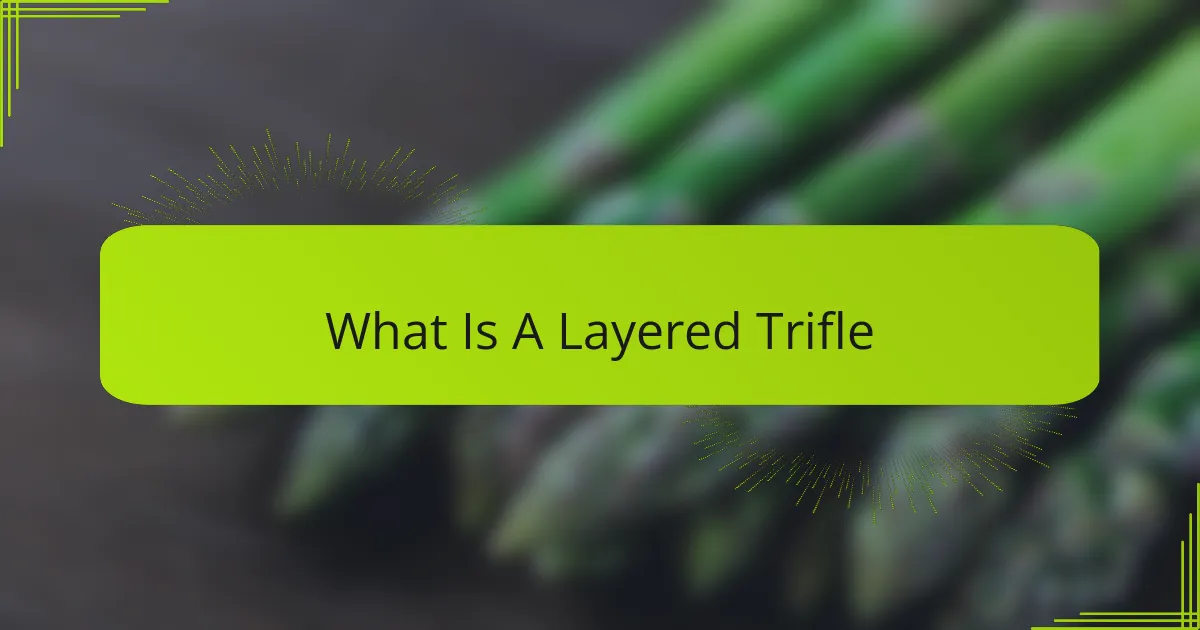
What Is A Layered Trifle
A layered trifle is essentially a beautiful assembly of different dessert components stacked in clear glass, creating a stunning visual effect. Have you ever been drawn to it at a buffet, fascinated by the colorful layers inviting you to dig in? For me, it’s that peekaboo moment of seeing sponge cake, cream, fruits, and jelly peeking through that makes it irresistible.
What strikes me about a trifle is its simplicity mixed with elegance. It’s not just a random mix but a thoughtful layering where each element—whether it’s custard, berries, or whipped cream—plays a role in the overall experience. Isn’t it wonderful how something so straightforward can feel so indulgent and festive all at once?
To me, the layered trifle is like a dessert story told through flavors and textures. The contrast between soft cake, silky custard, and juicy fruit works like a harmony in a song, making every spoonful interesting. This balance makes me appreciate the art of layering—not just visually, but in taste and mouthfeel too.
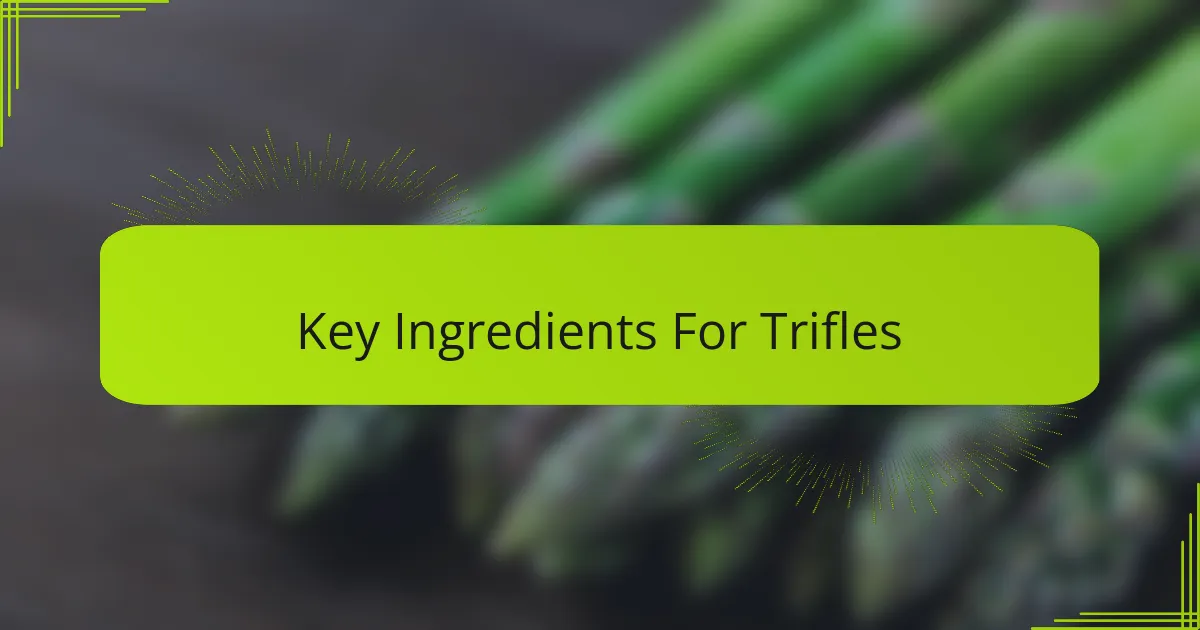
Key Ingredients For Trifles
When I think about the key ingredients for a trifle, the first thing that comes to mind is the sponge cake. It’s the foundation that absorbs the juices from the fruit and jelly, giving the trifle its moist, comforting texture. Have you ever noticed how a dry or overly dense cake can ruin the whole experience? That’s why choosing the right sponge is so important—it has to be light yet sturdy enough to hold everything together.
Fresh fruits are another essential part of the equation. I love how the natural sweetness and slight tang of berries or stone fruits add brightness and freshness to the layers. It’s like they bring a burst of color and flavor that prevents the dessert from feeling too heavy or one-dimensional. Don’t you find that those juicy, vibrant bites keep you coming back for more?
And then there’s the custard and whipped cream, which feel like the heart and soul of a trifle to me. The silky custard offers a luscious richness, while the airy cream adds softness and balance. Together, they create that indulgent mouthfeel that makes each spoonful feel special—almost like a comforting hug in dessert form. Isn’t that the kind of treat we all want at the end of a meal?

Essential Tools And Equipment
When I make a layered trifle, one tool I can’t live without is a clear glass trifle bowl. It’s not just about aesthetics—seeing those layers build up through the glass keeps me excited and motivated throughout the assembly. Have you ever lost track of your layers because you couldn’t see them clearly? That bowl solves that problem beautifully.
Another piece of equipment I rely on is a good, sturdy spatula. I find it makes all the difference when spreading custard or whipped cream evenly without disturbing the layers beneath. There’s a real joy in gently smoothing that top layer, almost like frosting a cake, and it’s much easier with the right tool in hand.
Lastly, I always have a set of measuring cups and spoons nearby. Precision matters, especially when you want your jelly or custard to set just right. Over the years, I’ve learned that baking and layering desserts become so much less intimidating when you trust your measurements and tools to get it right. Don’t you think having the right equipment makes any recipe feel a bit more manageable?
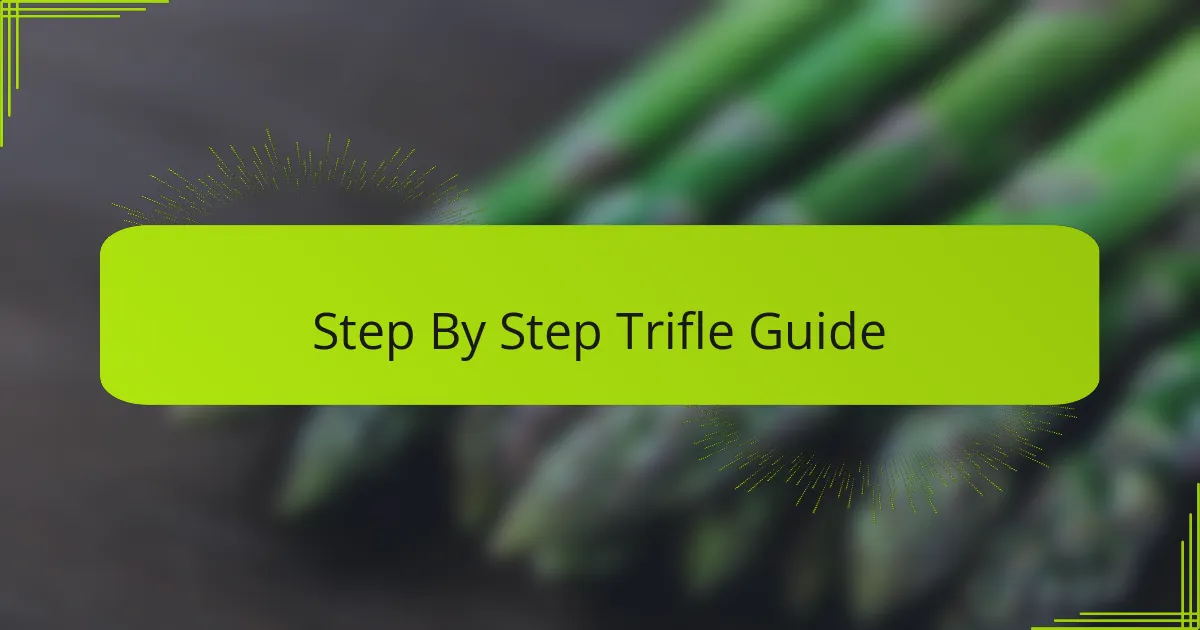
Step By Step Trifle Guide
When I approach creating a layered trifle, I like to take it step by step, almost like building a tasty tower. First, laying down a base of sponge soaked lightly in juice or sherry ensures each bite is moist and flavorful. Have you ever found that your cake layer feels dry or crumbly? That little soak makes all the difference to me—it’s like giving the dessert a juicy foundation to rest upon.
Next comes the layering of the custard and fruits, which I treat like an art form. I carefully spoon custard over the sponge, trying not to disturb it, then scatter vibrant fruit to add bursts of freshness and color. It’s a moment that always excites me because I know the textures and flavors will meld perfectly together once chilled. Don’t you love that satisfying feeling of seeing each layer come alive, teasing your taste buds?
Finally, the grand finale is the whipped cream topping, which I spread gently to create a smooth, cloud-like surface. I often pause here and think about how this creamy layer will balance the richness below, adding lightness and a touch of sweetness. This is when I remind myself to take a breath and enjoy the anticipation—because the best trifles are worth waiting for. Have you noticed how the simple act of layering can turn making dessert into a calming, almost meditative experience?
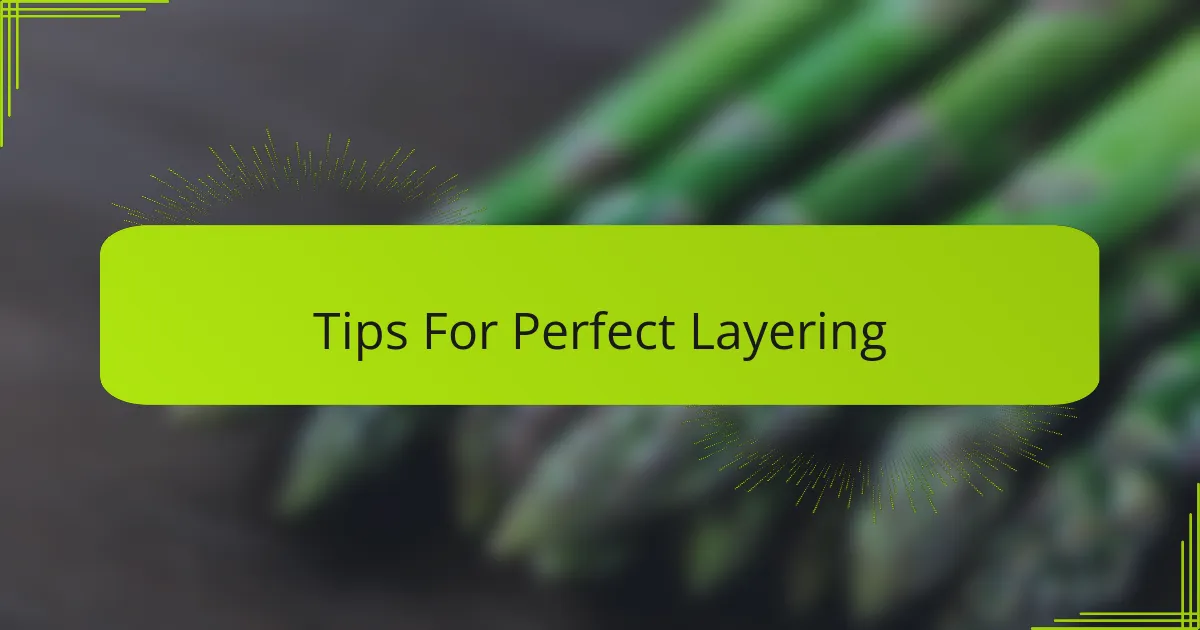
Tips For Perfect Layering
Layering a trifle to perfection is all about patience and a gentle hand. I’ve found that using the back of a spoon or a small spatula to carefully spread each layer keeps the boundaries neat and attractive. Have you ever tried to pour custard too quickly and ended up with a messy blend? Slowing down really saves the day.
Choosing the right order for your layers also makes a big difference. I tend to alternate textures—soft sponge, creamy custard, juicy fruit—to keep each bite interesting and prevent the layers from mixing too much. Does it not feel more satisfying when every spoonful has a balanced mix of flavors and textures instead of a muddled mess?
One tip I cherish involves chilling the trifle briefly between layers. Giving custard or jelly a few minutes to set before adding the next layer helps maintain clear separation and a clean look. It’s a small step, but I swear it makes the whole dessert look more polished and inviting—don’t you love when presentation matches taste so perfectly?
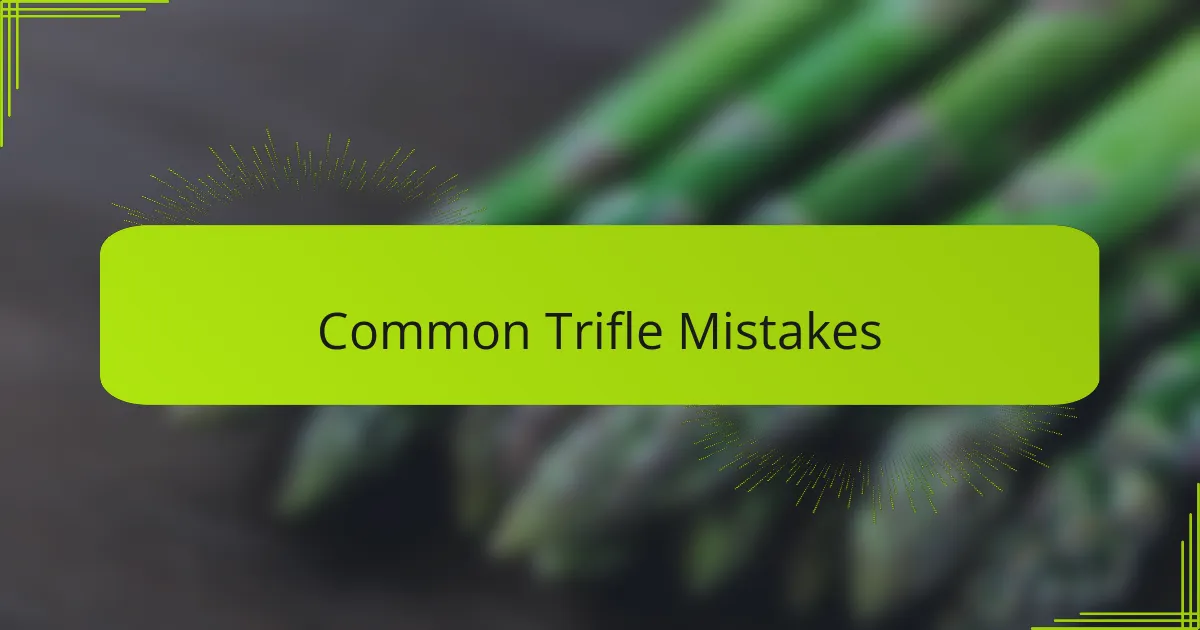
Common Trifle Mistakes
One common mistake I’ve seen, and even made myself, is rushing through the layering process. Have you ever been so eager to dig in that you skip letting the custard or jelly set properly? Trust me, that impatience usually leads to layers blending into a mushy mess rather than those beautiful, distinct strata we all crave.
Another pitfall is using the wrong sponge cake. I once grabbed a dense, dry cake and ended up with a trifle that felt tough and unpleasant instead of light and moist. It really taught me that the cake should be a sponge that soaks up juices without dissolving completely—otherwise, the texture suffers, and so does the enjoyment.
Then there’s the temptation to overload the trifle with too many ingredients. I’ve learned the hard way that overcrowding the layers can make the flavors compete and lose their harmony. Isn’t it better when each bite offers a balanced taste, letting every component shine rather than fighting for attention?

Personal Thoughts On Trifle Creation
Creating a layered trifle always feels like a personal journey for me. I love how each step calls for patience and a careful touch—it’s almost like building a delicate sculpture. Have you ever felt that satisfaction when your layers line up just right, and you know the flavors will marry beautifully? That moment makes all the effort worthwhile.
Sometimes, I find myself getting lost in the process, almost meditative as I spoon custard or arrange fruit. There’s a quiet joy in watching each layer settle perfectly, transforming simple ingredients into something elegant and inviting. Don’t you think that calm focus turns trifle-making into its own kind of therapy?
But let’s be honest—layered trifles can be tricky. I’ve had my share of mishaps where the jelly ran, or the cream was uneven, reminding me that this dessert demands respect. Still, those little challenges keep me coming back, eager to improve and enjoy the sweet rewards of a well-crafted trifle. Have you noticed how imperfection sometimes adds character to a dessert?




